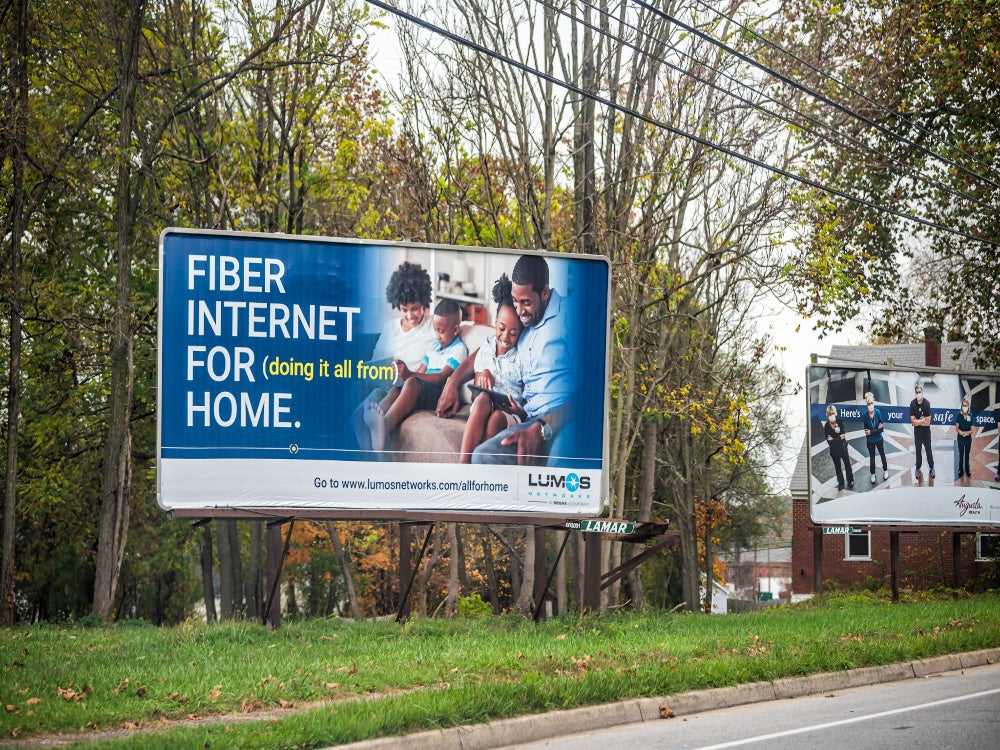On 13 May, 2022, the US government announced funding for three broadband subsidization programs, totalling $45 billion, aimed to bring internet to all American households and bridge the digital divide. The program will be administered through the National Telecommunications and Information Administration (NTIA), part of the US Department of Commerce, and distributed through state governments.
The biggest chunk of the provided funding goes into the Broadband Equity, Access, and Deployment (BEAD) program. BEAD funding focuses on broadband projects in unserved and underserved areas, as well as on planning and capacity-building for program administration in state offices. Program implementation will be led by the Federal Communications Commission’s (FCC) broadband coverage maps for identifying unserved and underserved areas (i.e., those with no access to 25 Mbps downlink/3 Mbps uplink and 100 Mbps downlink/20 Mbps uplink services, respectively).
Elimination of broadband white spots
In addition to its focus on eliminating broadband coverage white spots, BEAD also includes other priorities and conditions. Although the program documentation is largely technology-neutral, it does state that the priority will be given to last-mile fiber projects as a means for ensuring not only network performance, but also a scalable and long-term solution for broadband connectivity.
This prioritization could have a strong effect on (primarily) rural broadband operators and accelerate their transition to fiber, as well as bolstering US-based broadband technology providers (e.g., Adtran, Calix, Casa Systems, and DZS) and those with a substantial US presence (e.g., Nokia). On the flipside, it puts limits on the edge-out ambitions of cable operators and could accelerate their transition to fiber as well.
The program also emphasizes other criteria, like affordability, project time-to-market, and sustainability. Of these, affordability will likely be the most contentious issue; it will require operators to balance their capital and operating expenditure plans with funding requirements and long-term return on investment to be able to fit with the FCC Affordable Connectivity Program’s benchmark of $30/month for broadband access.
Success is not guaranteed
Although BEAD and other associated programs enjoy bipartisan support and will significantly accelerate US broadband buildouts, success is not guaranteed. Unlike most other countries with national broadband programs, the US’ process of disbursing funds through state administrations, although necessary for such a large and diverse country, will add another step in the potentially lengthy approval and funding process. Its administrative requirements can also dissuade small local operators or non-operator initiatives, like community-owned networks. Finally, some commercial entities may struggle with affordability, sustainability, equipment sourcing, and labor criteria.
How well do you really know your competitors?
Access the most comprehensive Company Profiles on the market, powered by GlobalData. Save hours of research. Gain competitive edge.

Thank you!
Your download email will arrive shortly
Not ready to buy yet? Download a free sample
We are confident about the unique quality of our Company Profiles. However, we want you to make the most beneficial decision for your business, so we offer a free sample that you can download by submitting the below form
By GlobalDataNevertheless, these potential hurdles do little to diminish the importance of the Internet for All initiative. At more than twice the size of previous programs, such as the $20.4 billion Rural Digital Opportunity Fund allocated by the FCC in 2019, it can bring qualitatively different outcomes to the US national broadband buildout due to its sheer size and emphasis on affordability and long-term sustainability.








Related Company Profiles
Nokia Corp
Adtran Inc
Casa Systems Inc
DZS Inc
Calix Ltd